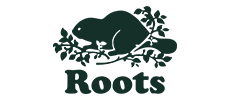Family secures a natural future for beloved marsh by donating land for conservation
Bonanza Marsh is the only large wetland on Slocan Lake
After more than half a century of caring for the forests and wetlands on their property on Slocan Lake, the Alvarez family has ensured a permanent conservation future for their land by donating it to the Nature Conservancy of Canada (NCC). The five-hectare parcel includes a significant portion of an ecologically important wetland complex known as Bonanza Marsh. This wetland supports an incredible diversity of wildlife and sensitive ecosystems and plays an essential role in maintaining water quality in the lake.
Located at the north end of Slocan Lake and straddling the mouth of Bonanza Creek, the new conservation area builds on other efforts to protect the entire Bonanza Marsh wetland. The donated property encompasses the lakeshore portion of the marsh. The property also borders the Snk’mip Marsh Sanctuary, which protects the upper reaches of the marsh complex.
This land plays a critical role in conserving the overall health and resiliency of the wetland system. The conservation area includes spawning grounds for Kokanee salmon and other fish, and nesting and feeding habitat for migratory and resident birds. It forms part of a wildlife corridor for grizzly bear, moose, elk and other animals. Species listed on the federal Species at Risk Act that have been observed on the property include grizzly bear (special concern), little brown myotis (endangered) and western toad (special concern).
The Alvarez family has owned and cared for the Bonanza Marsh property since the early 1960s, with each new generation supporting the original vision of protecting the wetland from development and nurturing its natural features. Transferring the land to NCC fulfills the family’s inter-generational promise to protect the land and secures its conservation future.
A portion of this project was donated to NCC under the Government of Canada’s Ecological Gifts Program. This program provides enhanced tax incentives for individuals or corporations who donate ecologically significant land.
This project showcases how NCC is working to conserve strategic areas of high biodiversity, both large and small, to support a thriving world. In the past two years alone, NCC has influenced the protection of more than 1 million hectares (almost twice the size of Prince Edward Island), coast to coast to coast. Over the next few years, the organization will double its impact by mobilizing Canadians and delivering permanent, high-value conservation.
In the face of rapid biodiversity loss and climate change, nature is our ally. There is no solution to either without nature conservation. When nature thrives, we all thrive.
Quotes
“It would be hard to overstate the value of this land from a conservation perspective. The abundance and diversity of wildlife here is immediately apparent; in my first minutes on the land, I saw eagles perching in the trees, herons fishing on the shore and deer foraging in the shrubs. This is to say nothing of the smaller and even microscopic life that thrives in this rich marsh environment. The commitment shown by the Alvarez family to this land for more than half a century is amazing, and the Nature Conservancy of Canada is honoured that they have entrusted their legacy to our care.”
~Richard Klafki, Canadian Rockies Program Manager, Nature Conservancy of Canada
“When our parents, Arthur and Marguerite, bought the ‘swamp’ property in the early 1960s, they wanted to ensure that it remained unspoiled and undeveloped. Three generations of the Alvarez family have worked to keep it in a natural state, and we feel that our decision to donate that land to the Nature Conservancy of Canada is the best way to ensure that this remains the case in perpetuity.”
~Henri Alvarez, on behalf of the Alvarez family
“The twin crises of climate change and biodiversity loss are two sides of the same coin, and we must tackle them together. With partners like the Nature Conservancy of Canada and the generosity of the Alvarez family, we are helping to protect the natural environment in British Columbia and across the country. Through initiatives such as the Ecological Gifts Program, we are making progress together toward our goal of conserving a quarter of lands and oceans in Canada by 2025.”
~The Honourable Steven Guilbeault, Minister of Environment and Climate Change
Facts
- Bonanza Marsh lies within the traditional territories of the Secwépemc, Syilx, Ktunaxa and Sinixt Nations.
- The Slocan Watershed is one of the few undammed river and lake systems in the Kootenays. Slocan Lake is one of the few natural lakes in the region.
- Shallow water wetlands make up almost half of the conservation area, characterized by sedge and cattail marshes, and willow- and alder-dominated swamps. Forested areas comprise both mature and old-growth cedar-hemlock stands and cottonwood groves.
- The Bonanza Marsh is unique for being a valley bottom wetland that has not been impacted by development; it remains a naturally functioning wetland dominated by native species.
Acknowledgements
This project was made possible through the generous donation of land by the Alvarez family through the Government of Canada’s Ecological Gifts Program. It was also supported by the US Fish and Wildlife Service, American Friends of Canadian Nature Inc., Kicking Horse Coffee and Eric Grace.
Photos
About
The Nature Conservancy of Canada (NCC) is the country’s unifying force for nature. NCC seeks solutions to the twin crises of rapid biodiversity loss and climate change through large-scale, permanent land conservation. As a trusted partner NCC works with people, communities, businesses and government to protect and care for our country’s most important natural areas. Since 1962, NCC has brought Canadians together to conserve and restore more than 15 million hectares.
Learn More
Follow us on on X (formerly Twitter): x.com/NCC_CNC | x.com/NCC_CNCMedia
Find us on Facebook
- 30 -




